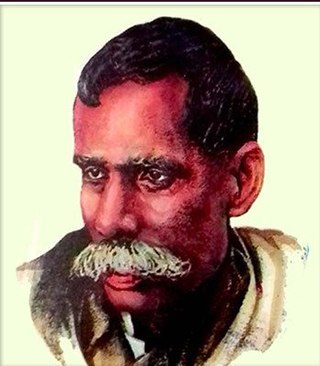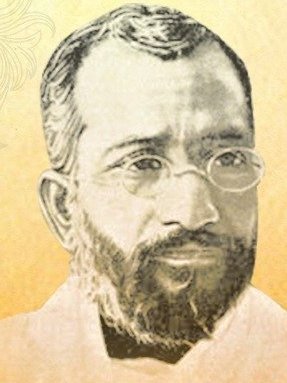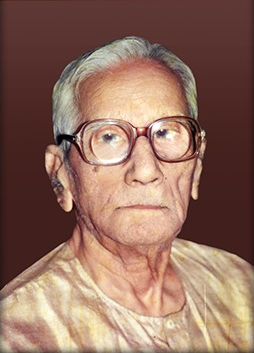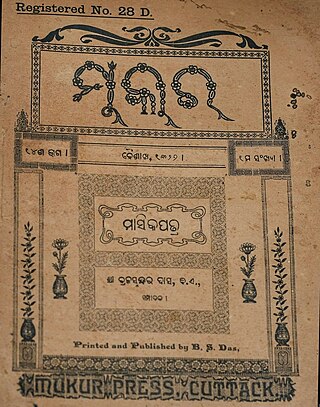
Odia is a classical Indo-Aryan language spoken in the Indian state of Odisha. It is the official language in Odisha, where native speakers make up 82% of the population, and it is also spoken in parts of West Bengal, Jharkhand, Andhra Pradesh and Chhattisgarh. Odia is one of the many official languages of India; it is the official language of Odisha and the second official language of Jharkhand. The Odia language has various dialects varieties, including the Baleswari Odia, Kataki, Ganjami Odia, Sundargadi Odia, Sambalpuri, Desia and Tribal Community dialects who spoken by the tribals groups in Odisha who adopted the Odia language.
The Karan or Karana is a community found in the state of Odisha in India. The post of Karana used to be a professional designation that was occupied by literate peoples. They held Karanam posts in some parts of Andhra Pradesh, where they speak Odia and played a similar role in Odisha to that of the Kayasthas of West Bengal and Bihar. In the social hierarchy of Odisha they rank next to Brahmins. They exclusively served the ruling powers as their ministers, advisors, governors, military commanders, record keepers and dewans. They owned most Zamindaris in Odisha. They have the highest literacy caste-wise and are highly prosperous. Today they are a politically dominant community and have reigned over the politics of Odisha for 50 years.

Manoj Das was an Indian author who wrote in Odia and English. In 2000, Manoj Das was awarded the Saraswati Samman. He was awarded Padma Shri in 2001, the fourth-highest Civilian Award in India, and Padma Bhusan in 2020, the third-highest Civilian Award in India for his contribution to the field of Literature & Education.
Odia literature is literature written in the Odia language, mostly from the Indian state of Odisha. The modern Odia language is mostly formed from Tadbhava words with significant Sanskrit (Tatsama) influences, along with loanwords from Desaja, English, Hindustani (Hindi/Urdu), Persian, and Arabic. Its earliest written texts date from around 1000 CE. The earliest Odia newspaper was Utkala Deepika, first published on August 4, 1866.

Radhanath Ray was an Odia writer of initial modernity era in Odia poetry during the later part of nineteenth century. He was born in a Zamindar Karan family in Baleshwar, now in Odisha, and is honoured in Odia literature with the title Kabibara . In his early life, he composed in both Odia and Bengali languages, but later he shifted his writings in Odia only. He was born on 28 September 1848, at Kedarpur village in Baleswar district, Odisha. He has contributed verses and poetry for Odia literature in the nineteenth century.

Gopabandhu Das (1877–1928), popularly known as Utkalamani Gopabandhu Das, was a social worker, reformer, political activist, journalist, poet and essayist.

Odia cinema, also known as Ollywood, is the segment of Indian cinema, dedicated to the production of motion pictures in the Odia language widely spoken in the state of Odisha. Odia Cinema is based in Cuttack in Odisha, India. The name Ollywood is a portmanteau of the words Odia and Hollywood.

Madhusudan Rao was an Odia poet and writer from India. He was known as Bhaktakabi. His most well known work is the Chhabila Madhu Barnabodha. He was also a prominent acharya of the Brahmo Samaj.

Odisha Day, also Utkala Dibasa, is celebrated on 1 April in the Indian state of Odisha in memory of the formation of the state as a separate state out of Bihar and Orissa Province with addition of undivided Koraput District and Ganjam District from the Madras Presidency on 1 April 1936. After losing its political identity completely in 1568 following the defeat and demise of the last king Mukunda Dev, efforts resulted in the formation of a politically separate state under British rule on a linguistic basis on 1 April 1936.

Madhusudan Das was an Indian lawyer and social reformer, who founded Utkal Sammilani in 1903 to campaign for the unification of Odisha along with its social and industrial development. He was one of the prominent figure, helping in the creation of Orissa Province, which was established on 1 April 1936. He was also the first graduate and advocate of Odisha. He is also known as Kulabruddha, Madhu Babu, and Utkal Gouraba. In Odisha, his birthday is celebrated as the Lawyers' Day on 28 April.

Gopala Chandra Praharaj was a writer in the Odia language, well known as the compiler of the Purnachandra Odia Bhashakosha. He also contributed significantly to Odia literature by his works in prose. A lawyer by profession, Praharaj wrote several satirical and analytical essays, in magazines such as Utkal Sahitya, Rasachakra, Nababharata, and Satya Samachar, on the social, political and cultural issues of contemporary Odisha (Odisha) during early 20th century.

Dr. Radhanath Rath was a newspaper editor, freedom fighter, social worker and politician from Odisha. He was the editor of The Samaja, one of the leading newspapers of Odisha.

Gourishankar Ray, better known as Karmaveer Gourishankar, a prominent figure amongst the makers of Modern Orissa (Odisha) as well as the savior of Odia (Oriya) language and literature, who led the Save Oriya Movement during the late nineteenth century working relentlessly for the protection and preservation of the Odia language. He was a Bengali from East Bengal from a Zamindar Kayastha family at a time when an anti Oriya movement rocked the province to replace it by Bengali in the coastal, Hindi in the western and Telugu in the southern Orissa which ultimately was thwarted and Oriya was given its due place.
Natabara Samantaray was an Odia writer and literary critic. Some of his known literary historical works are Odia Sahityara Itihasa (1803-1920), Adhunika Odia Sahityara Bhittibhumi and Vyasakabi Fakirmohan. His critical review included works of many noted Odia authors like Fakir Mohan Senapati and Radhanath Ray. His historical research includes all of the major Odia writings published during 1803 until 1920 which accentuate the British Raj and its impact in coastal Odisha, and a critical analysis of the modern Odia literature.
Kanhu Charan Mohanty was an Indian Odia language novelist who wrote fifty-six novels in a career spanning over six decades from 1930 to 1985. He is considered "one of the most popular and celebrated novelists of Odisa". Mohanty was awarded the Sahitya Akademi Award in 1958 for his novel, Kaa, published in 1956, and was one of the fellows of the Sahitya Akademi. Mohanty died on 6 April 1994 at the age of 87.
Reba Ray was an Indian Odia poet educationist and administrator. Best known as one of the earliest Odia women writers, she was also founder of Model Girls' School, Cuttack. Her short story Sanyasi is considered earliest modern Odia short story by a woman writer. She was niece of renowned Odia poet Madhusudan Rao.

Mukura was a 20th century Odia magazine. It was founded by Brajasundar Das in 1906 in Cuttack, Odisha and was published for about 25 years, with its last issue in 1930. Brajasundar Das was the editor of this magazine. It cost Rs. 2 at the time.

Braja Sundar Das was a multifaceted Indian statesman, freedom fighter, politician, poet, littérateur, and social reformer who played a significant role in shaping the socio-political and cultural landscape of Odisha.













